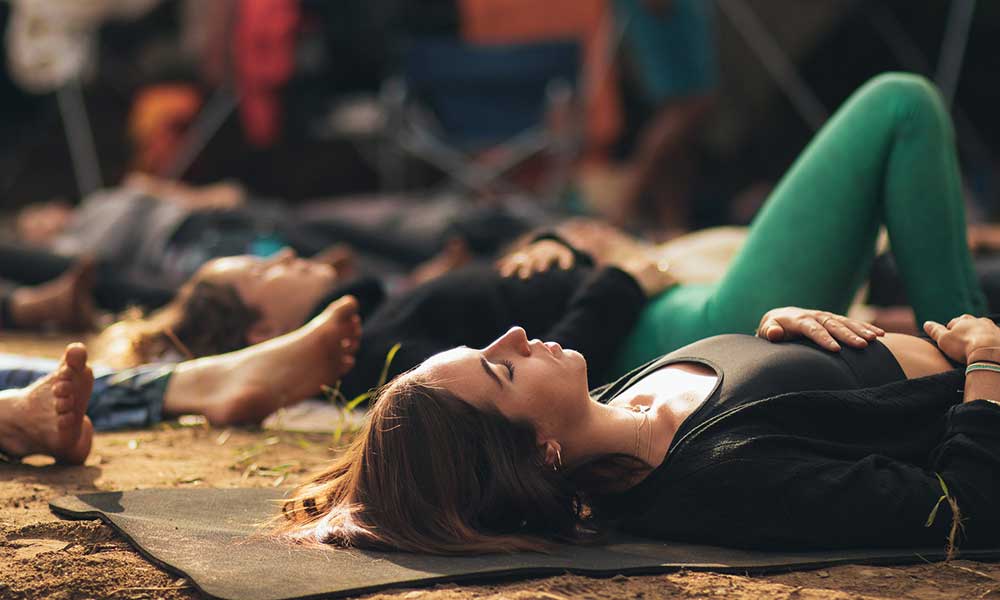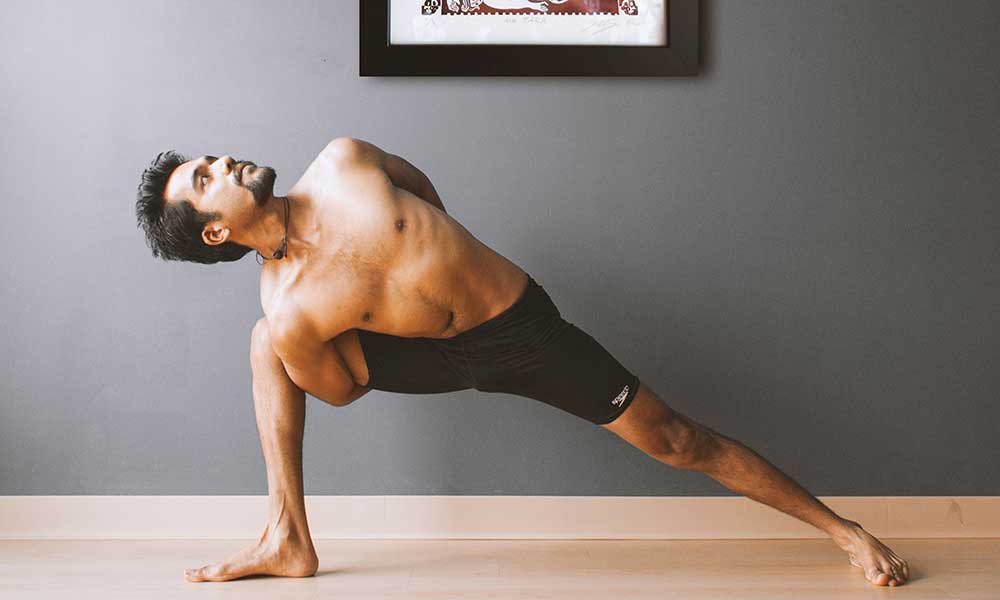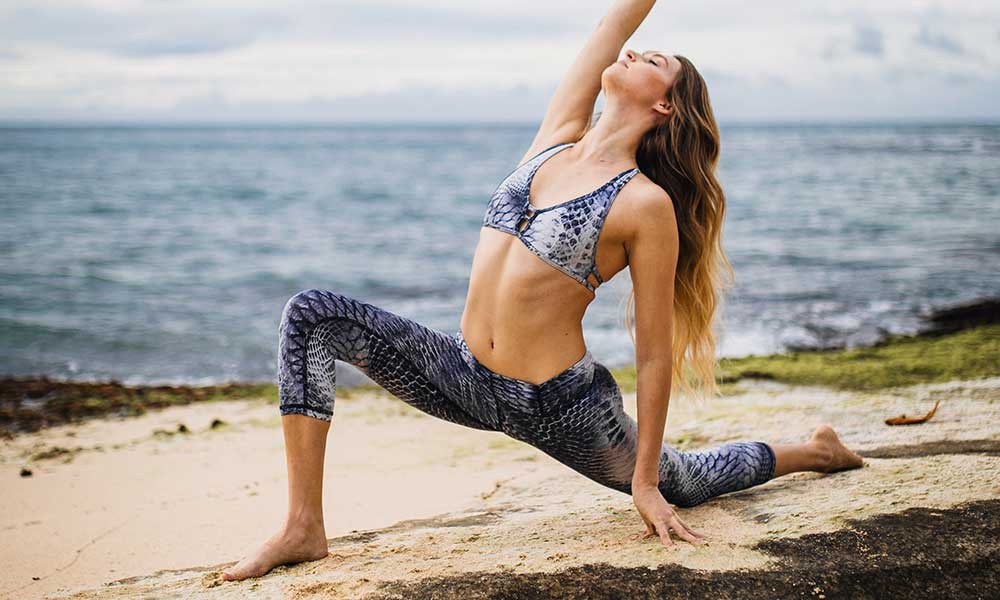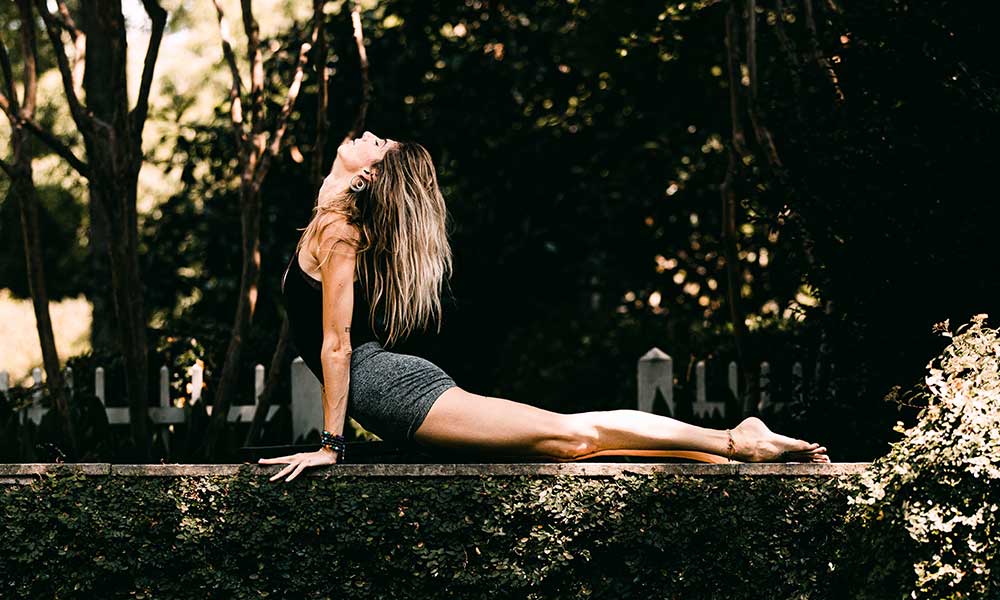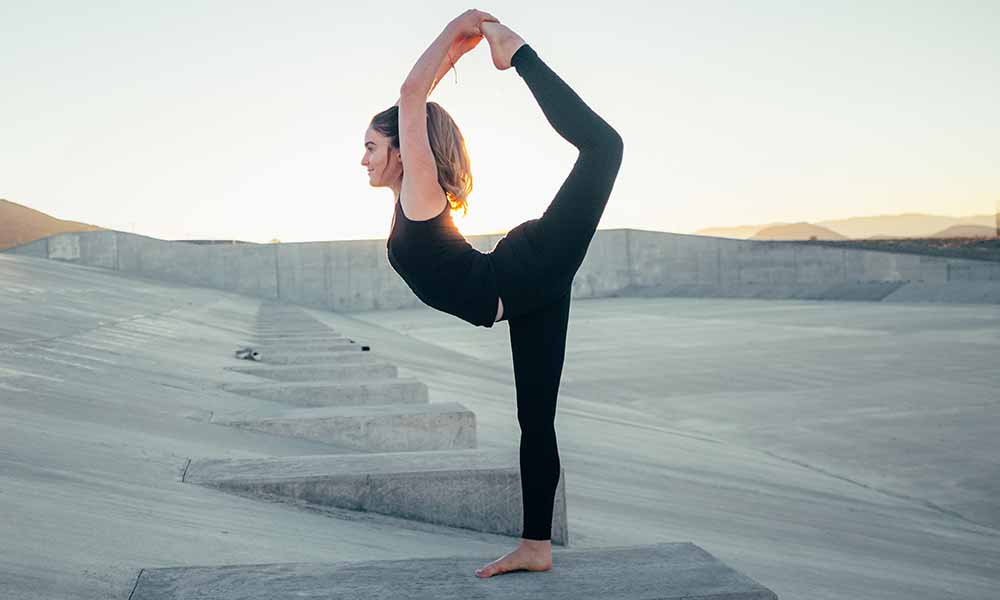Every style of yoga has its benefits, from vinyasa to power yoga.
While some yoga classes are designed to strengthen and tone your muscles, others are more geared toward relaxation and stretching.
Restorative yoga is exactly what it sounds like: a yoga style that is focused on restoring your well-being on a mental, physical, and emotional level.
This is a practice that anyone can enjoy and benefit from, as it is slow-paced and focuses primarily on stretching and breathing. Let’s explore the ins and outs of restorative yoga and what it can do for your body.
What Is Restorative Yoga?
In contrast to steamy, fast-flowing vinyasa, restorative yoga can be described as therapeutic, relaxing, and gentle.
It is meant to heal your parasympathetic nervous system through a series of restorative poses.
This style of yoga requires you to hold poses for a longer amount of time than you would in a vinyasa class, allowing time for deeper breathing.
The combination of holding poses and breathing deeply into your tissues can help to slow your breathing and lower your blood pressure.
Restorative yoga practice is meant to be a cozy experience that submerges you into a state of deep relaxation.
Due to the nature of this practice, it is not uncommon for blocks, bolsters and even blankets to be used.
The props are there to give you a little extra support in areas where you might need it if it’s too uncomfortable to do the poses without them.
For example, some yogis like to place a block underneath their low spine for added support during fish pose or under their hip joints in half pigeon pose.
Regardless of what your threshold is for stretching, the goal is to feel comfortable and relaxed as opposed to feeling pain.
Health Benefits Of Restorative Yoga
Yoga is generally good for you, no matter what style you are practicing. However, restorative yoga has its own special perks such as:
- It relaxes your mind and body by lowering your levels of cortisol, the stress hormone.
- It soothes your body’s parasympathetic nervous system and stops your body from evoking the fight-or-flight response.
- The combination of deep breathing and holding postures for an extended period of time can enhance your overall feelings of well-being and lower feelings of depression.
- The calming effect that you feel from restorative yoga, can have a positive effect on your sleep quality.
- Restorative yoga is a generally sage practice that even people with chronic joint pain and injuries can partake in.
- Pregnant women can do restorative yoga.
How To Practice Restorative Yoga
This particular style of yoga is known for its sweet comfort and is usually accompanied by blocks, bolsters or folded blankets.
These props can be used for extra support, though they are not necessary.
The point of this practice is to sit in the poses for at least five minutes, though you are welcome to stay even longer.
Some yogis prefer to stay in certain poses for as long as 20 minutes.
Some of the most popular poses in restorative yoga are:
The Fish Pose
This pose is designed to help stretch out your spine and release tension in the neck and shoulders.
It is also known to be a “heart opening” posture which is said to enhance feelings of love and kindness for yourself and others.
To do this pose, you will need to begin in a seated position and slowly lie back, keeping your legs in a seated posture.
Try to keep your back and shoulder blades flat on the ground below you, rest your arms at your sides, and allow yourself to sink into the pose.
You can use a folded blanket beneath your upper back and a block underneath your low spine to feel supported, but it is not required.
Child’s Pose
This pose works wonders for letting go of the day, by releasing stress and fatigue from the body.
The popular Child’s Pose will give you a nice stretch in your spine, glutes, hips, hamstrings, and shoulder muscles without applying a ton of pressure.
To do this pose, you’ll want to kneel on the floor with your knees hip width apart. Your big toes should touch, and you should aim to rest your buttocks on top of your heels.
Your torso should rest between your thighs, and your head should face down to meet the floor.
Arms should be extended in front of you with your palms pressing down into the ground.
If this is too deep of a stretch for your upper body, you may rest your arms alongside your body with your palms facing the ceiling.
Some yogis will place a folded blanket between their thighs, head, and/or arms for extra support.
Corpse Pose
The lovely savasana, or “corpse pose” is a yoga pose that just about anyone can do.
To get into this pose, extend your legs out in front of you and then slowly lie down on your mat.
If you want to use folded blankets, lay one down at the top of your mat for your head and then two stacked on top of each other near the bottom of your mat.
You may also use a bolster if you do not have two folded blankets handy.
Allow your arms to lay relaxed at your sides in a natural position with your palms facing the sky.
Ideally, there should be some space between your arms and your body.
Legs-Up-The-Wall-Pose
This pose is great for giving your tired legs a rest and relieving any tension you might be holding in the lower body, as well as the back of the neck.
To do this pose, position your mat so that the end of it is touching the wall.
If you are using a folded blanket, lay it down in the center of the mat so that it supports your head.
Start in a seated position with the right side of your body touching the wall and then begin to lie down as you swing your legs against the wall.
The goal is to have your buttocks as close to the wall as feels comfortable to you.
If you would like to place a folded blanket under your back for extra support, you may do so.
Your arms may either lay on either side of you, or you can simply allow them to rest on your belly.
Frequently Asked Questions (FAQ)
Here are some of the most common questions that people have about practicing restorative yoga.
What is the purpose of Restorative Yoga?
The purpose of restorative yoga is to melt into a state of deep rest by holding poses for a long period of time while breathing deeply.
What is the difference between yin yoga and restorative yoga?
While some people could use the terms interchangeably, they are not the same.
Though similar, restorative yoga focuses on restoring and healing our bodies of pain and ailments.
Yin yoga focuses on our connective tissues, activating change by targeting the deepest, most untouched parts of our physical body.
Is Restorative Yoga for Beginners?
Restorative yoga is one of the yoga styles that is beginner-friendly as it is gentle on the body and relaxing in nature.
As always, you should be careful to never force or pressure your body into any poses that cause you pain or severe discomfort.
How many poses are in a restorative yoga class?
A restorative yoga class will typically only consist of around five or six poses that are held for anywhere between 5-10 minutes.

